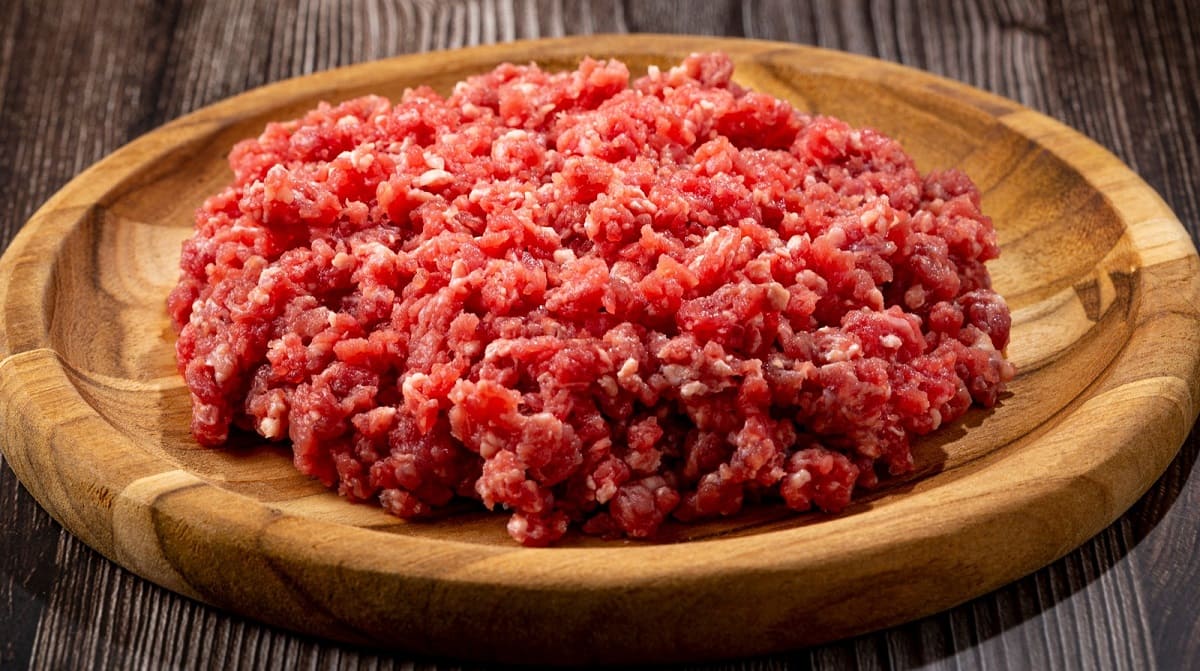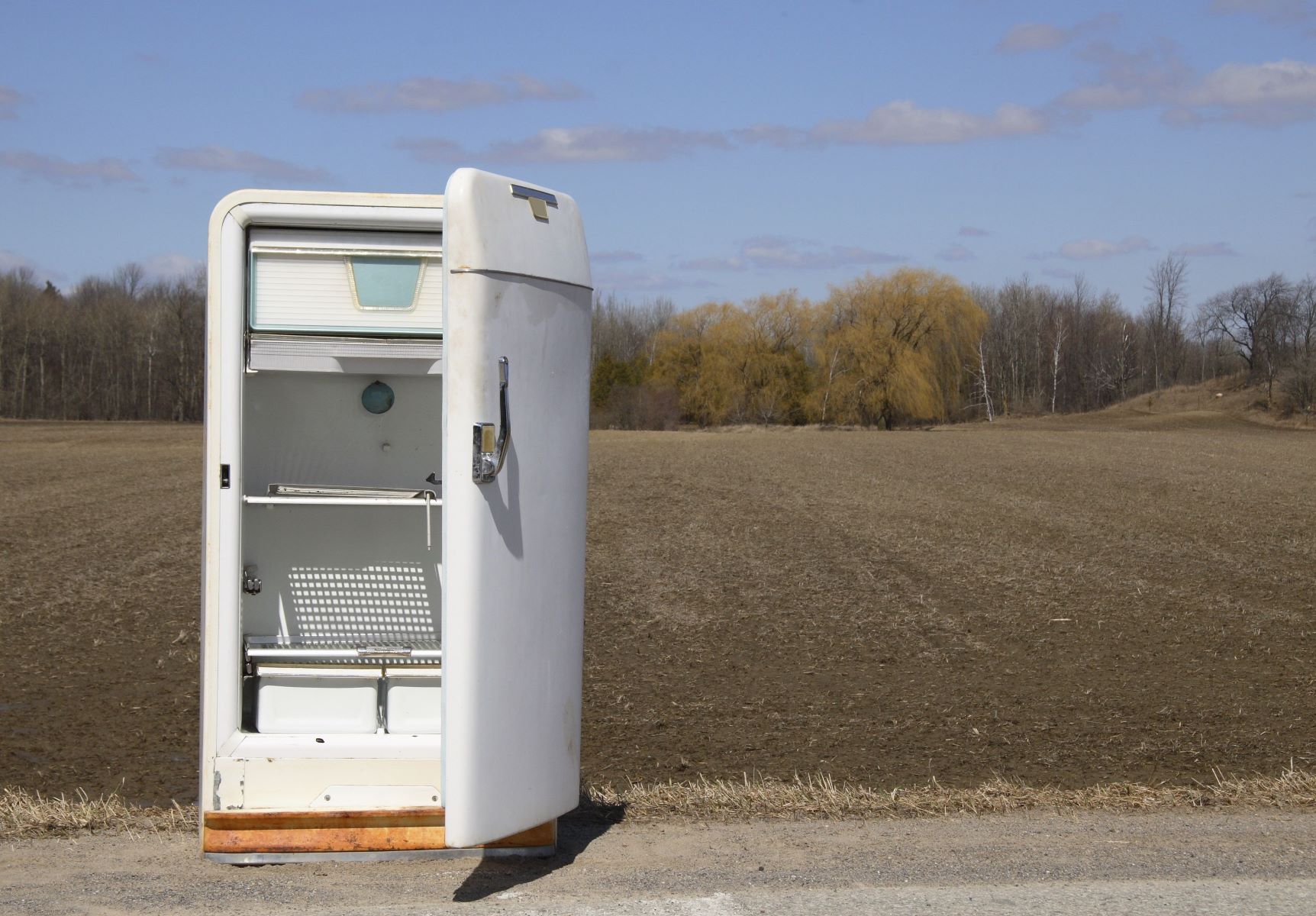

Articles
How To Store Unused Ground Beef
Modified: January 5, 2024
Looking for tips on how to store unused ground beef? Check out our informative articles packed with helpful techniques to keep your ground beef fresh for longer!
(Many of the links in this article redirect to a specific reviewed product. Your purchase of these products through affiliate links helps to generate commission for Storables.com, at no extra cost. Learn more)
Introduction
Ground beef is a versatile ingredient that can be used in a variety of delicious dishes, from juicy burgers to flavorful meatballs and savory tacos. However, there may be occasions when you find yourself with leftover ground beef that needs to be stored properly to ensure its freshness and flavor are preserved.
In this article, we will explore different methods of storing unused ground beef, whether it’s for short-term refrigeration or long-term freezing. We will also provide tips on portioning and packaging ground beef to make it easier to use and reduce waste. So, let’s dive in and discover the best practices for storing your unused ground beef.
Key Takeaways:
- Properly storing unused ground beef is crucial for maintaining its freshness and flavor. Whether freezing, refrigerating, vacuum sealing, or using freezer bags, following the right techniques ensures optimal quality and safety.
- Dividing ground beef into portion sizes and following proper storage methods helps reduce waste and preserve its quality. Whether for short-term use or long-term storage, these techniques ensure convenient and safe usage.
Read more: How To Store Cooked Ground Beef
Freezing Ground Beef
Freezing ground beef is an excellent way to extend its shelf life and ensure it remains safe to use when you’re ready to cook with it. Follow these steps to freeze ground beef properly:
- Divide the ground beef into smaller portions: If you have a large amount of ground beef, divide it into smaller portions based on how much you typically use in a recipe. This will make it easier to thaw only the amount you need without having to defrost the entire package.
- Wrap it tightly: Wrap each portion tightly in plastic wrap to prevent air from coming into contact with the meat. This will help prevent freezer burn and maintain the quality of the ground beef.
- Place in a freezer-safe container: Once wrapped, place the portions of ground beef into airtight freezer-safe containers or resealable freezer bags. Make sure to label them with the date, so you know how long they’ve been in the freezer.
- Store in the freezer: Put the containers or bags in the coldest part of your freezer, keeping it at or below 0°F (-18°C) to ensure it stays frozen.
When you’re ready to use the frozen ground beef, simply thaw it in the refrigerator overnight or use the defrost setting on your microwave. Avoid thawing ground beef at room temperature, as this can promote bacterial growth and compromise food safety.
It’s important to note that frozen ground beef can be stored for up to four months without significant loss of quality. However, for the best flavor and texture, it’s recommended to use it within three months.
Refrigerating Ground Beef
If you plan to use your ground beef within a few days, refrigeration is the way to go. Here’s how to properly store ground beef in the refrigerator:
- Transfer it to an airtight container: If your ground beef came packaged in a tray or wrap, it’s best to transfer it to an airtight container. This helps to maintain freshness and prevent any odors from permeating the meat.
- Label with the purchase date: Use a marker or label to indicate the purchase date on the container. This will help you keep track of its freshness and know when it’s time to use or freeze the ground beef.
- Store it in the coldest part of the fridge: Place the container of ground beef in the coldest section of your refrigerator, which is usually the back or bottom shelf. This ensures that it stays at a consistent temperature, minimizing the risk of bacterial growth.
- Use it within 2-3 days: Ground beef can typically stay fresh in the refrigerator for 2-3 days. It’s important to consume it within this timeframe to ensure food safety and maintain its quality.
Remember, if you don’t plan to use the ground beef within a few days, it’s best to freeze it instead for long-term storage.
Vacuum Sealing Ground Beef
Vacuum sealing is a popular method for preserving the freshness and flavor of ground beef. By removing the air from the packaging, you can significantly extend its shelf life. Here’s how to vacuum seal ground beef:
- Divide the ground beef into portions: Similar to freezing, divide the ground beef into smaller portions based on your usage preferences. This will make it easier to vacuum seal and thaw only what you need.
- Wrap it tightly: Before vacuum sealing, wrap each portion tightly in plastic wrap or freezer paper. This added layer helps protect the meat and prevents the moisture from affecting the vacuum sealing process.
- Place in a vacuum sealing bag: Insert the wrapped ground beef portions into a vacuum sealing bag. Make sure to leave enough space at the top for sealing.
- Vacuum seal the bag: Use a vacuum sealing machine to remove the air from the bag and create an airtight seal. Follow the instructions provided with your specific machine for best results.
- Label and store: After vacuum sealing, label each bag with the contents and date of packaging. Place the bags in the freezer or refrigerator, depending on whether you plan to use it within a few days or for long-term storage.
Vacuum-sealed ground beef can be stored in the freezer for up to a year without significant loss of quality. In the refrigerator, it can last for about a week. Make sure to thaw vacuum-sealed ground beef in the refrigerator for best results.
Vacuum sealing not only preserves the quality of the ground beef but also helps to prevent freezer burn and extend its shelf life, making it a great option for those who are looking for long-term storage solutions.
Store unused ground beef in an airtight container or resealable bag in the refrigerator for up to 2 days. For longer storage, freeze the beef in a freezer-safe container or bag for up to 3-4 months.
Using Freezer Bags for Ground Beef
Freezer bags are a convenient and cost-effective option for storing ground beef. They provide a reliable barrier against air and moisture, keeping the ground beef fresh and preventing freezer burn. Follow these steps to use freezer bags for storing ground beef:
- Prepare the ground beef: If your ground beef is not already packaged, divide it into portions based on your needs. This will make it easier to thaw and use only the required amount.
- Place the ground beef in the bags: Open a freezer bag and carefully place the ground beef portion inside. Try to flatten the meat as much as possible to ensure even freezing and efficient use of freezer space.
- Seal the bag: Squeeze out as much air as possible from the bag before sealing it. You can use a straw or the edge of a counter to create a vacuum-like effect and remove excess air. Once done, seal the bag tightly.
- Label the bag: Use a permanent marker to write the date and contents on each bag. This will help you identify and rotate the ground beef as needed.
- Store in the freezer: Place the sealed and labeled freezer bags in the coldest part of your freezer, ensuring they are stacked securely and won’t be crushed. It’s recommended to arrange them flat to save space and promote even freezing.
Using freezer bags allows you to easily portion and access the ground beef as needed. It’s important to thaw the ground beef in the refrigerator when you’re ready to use it, rather than at room temperature, to ensure food safety.
Freezer bags are also reusable, so you can wash and dry them after each use to reduce waste and save money. However, it’s always a good idea to inspect the bag for any signs of damage or wear before reusing it.
Read more: How To Store Raw Ground Beef
Storing Ground Beef in Portion Sizes
Storing ground beef in portion sizes is a practical approach that makes meal planning and prep more convenient. By dividing the ground beef into smaller portions, you can easily grab the amount you need without having to thaw the entire package. Here’s how to store ground beef in portion sizes:
- Plan your portion sizes: Consider your typical recipes and portion sizes when dividing the ground beef. For example, if you often use half a pound of ground beef for a dish, aim to package it accordingly.
- Use separate containers or freezer bags: Prepare individual containers or freezer bags for each portion of ground beef. This will help you keep track of the serving sizes and make it easier to grab the right amount when cooking.
- Label each container or bag: Once you have divided the ground beef into portions, label each container or bag with the date and weight of the meat. This will help you keep track of freshness and ensure you are using the oldest portions first.
- Store in the freezer or refrigerator: Depending on your immediate needs, you can choose to either freeze or refrigerate the portioned ground beef. If you plan to use it within a few days, refrigeration is sufficient. However, for longer-term storage, freezing is the best option.
- Thaw and use as needed: When it comes time to cook with the portioned ground beef, simply thaw the desired amount in the refrigerator or using the defrost setting on your microwave. This allows for a safe and even thawing process.
Storing ground beef in portion sizes not only saves you time and effort but also reduces food waste. It allows you to use only what you need and helps preserve the quality of the remaining ground beef for future use.
Remember to follow proper food safety practices and use or freeze the portioned ground beef within a reasonable timeframe to maintain its freshness and flavor.
Tips for Storing Ground Beef
When it comes to storing ground beef, there are a few additional tips that can help you maintain its quality and flavor. Consider the following tips when storing ground beef:
- Keep it cold: Ground beef is highly perishable, so it’s crucial to store it at a safe temperature. Make sure your refrigerator is set to 40°F (4°C) or below, and the freezer is set to 0°F (-18°C) to prevent the growth of harmful bacteria.
- Use leak-proof packaging: Whether you decide to use freezer bags, airtight containers, or vacuum-sealed bags, ensure they are leak-proof to prevent any liquids from dripping or contaminating other items in your fridge or freezer.
- Practice proper handling: When handling ground beef, always wash your hands thoroughly before and after touching it to prevent cross-contamination. Use separate cutting boards and utensils for raw meat and other ingredients to avoid any potential foodborne illnesses.
- Avoid overcrowding: Whether you’re storing ground beef in the refrigerator or freezer, avoid overcrowding the storage space. Proper airflow is essential for maintaining optimal temperatures and reducing the risk of uneven freezing or thawing.
- Rotate your stock: To ensure you consume ground beef before it expires, practice the “first in, first out” rule. Place newly purchased or freshly prepared ground beef behind older ones in the freezer or refrigerator, so you use them in the proper order.
- Label and date everything: It’s essential to label each package of ground beef with the contents and date of packaging. This allows you to keep track of its freshness and easily identify different portions or cuts when planning your meals.
- Don’t refreeze thawed ground beef: Once you’ve thawed ground beef in the refrigerator, it’s important not to refreeze it. The quality and texture may suffer, and the risk of bacterial growth increases.
By following these tips, you can ensure that your stored ground beef remains safe, fresh, and delicious for an extended period, giving you the flexibility to use it in a variety of recipes whenever you need it.
Conclusion
Properly storing unused ground beef is essential to maintain its quality, flavor, and safety. Whether you choose to freeze it for long-term storage or refrigerate it for immediate use, following the right techniques can help preserve its freshness and extend its shelf life.
Freezing ground beef requires dividing it into smaller portions, wrapping it tightly, and storing it in freezer-safe containers or bags. This method allows you to easily thaw and use only the amount needed while keeping the rest of the meat in optimal condition.
Refrigerating ground beef is ideal for short-term storage. Transferring it to airtight containers and placing it in the coldest part of the fridge helps maintain its freshness for a few days. Remember to use or freeze it within the recommended timeframe to ensure food safety.
Vacuum sealing ground beef removes air and extends its shelf life by preventing freezer burn. By dividing the meat into portions, wrapping it tightly, and vacuum sealing it, you can enjoy high-quality ground beef for an extended period.
Using freezer bags is a convenient and cost-effective method. By properly packaging the ground beef in portion sizes and labeling each bag, you can easily retrieve the desired amount when cooking, reducing waste and ensuring freshness.
Lastly, by following some general tips, such as keeping the ground beef cold, practicing proper handling, and rotating your stock, you can further enhance the storage process and maintain optimal quality.
In conclusion, storing unused ground beef properly is crucial to ensure its flavor, safety, and longevity. Whether you choose to freeze, refrigerate, vacuum seal, or use freezer bags, implementing the right techniques will help you make the most out of this versatile ingredient, allowing you to whip up delicious meals whenever you desire.
Frequently Asked Questions about How To Store Unused Ground Beef
Was this page helpful?
At Storables.com, we guarantee accurate and reliable information. Our content, validated by Expert Board Contributors, is crafted following stringent Editorial Policies. We're committed to providing you with well-researched, expert-backed insights for all your informational needs.















0 thoughts on “How To Store Unused Ground Beef”